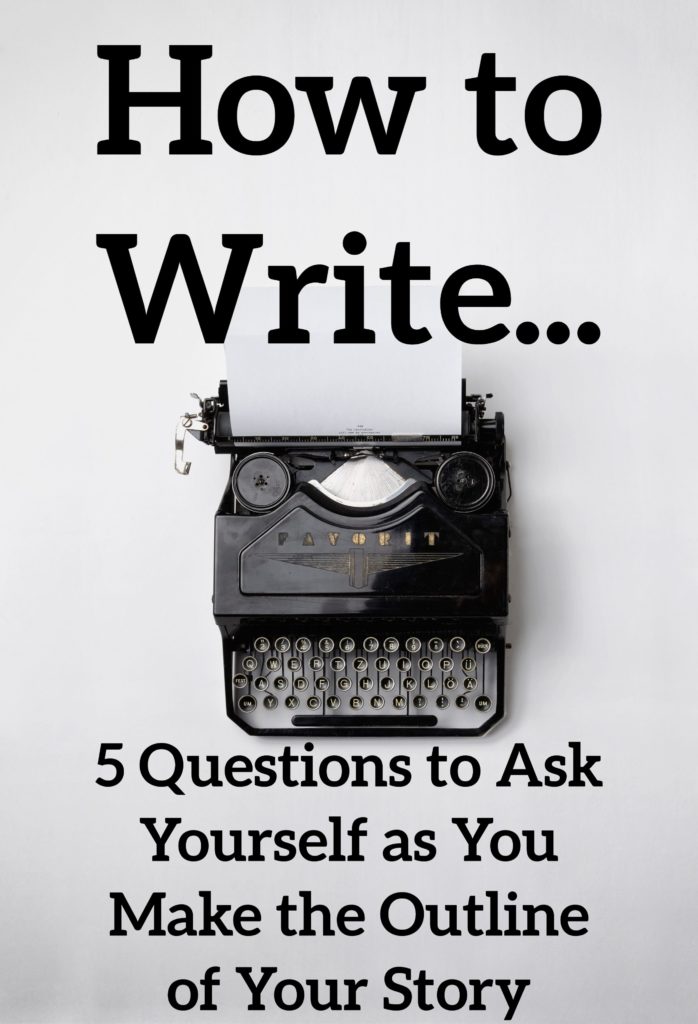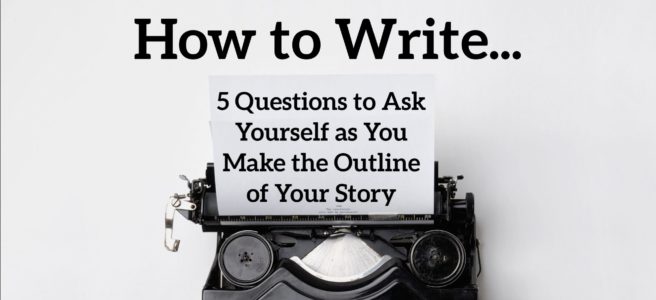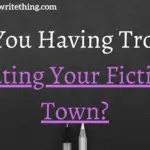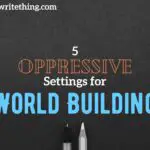
5 Questions to Ask Yourself as You Make the Outline of Your Story
5 Questions to Ask Yourself as You Make the Outline of Your Story: How can you deepen the conflict and make it more engaging for your reader?
# 1. How Can you Deepen the Conflict and Make it More Engaging for Your Reader?
If you want your story to be good, your conflict has to be engaging.
Ways to deepen the conflict and make it more engaging for your reader:
- Your main character has been wounded.
- The main conflict is somehow related to that wound, and the pain is still present.
- The wound has distorted the way your character views the world.
- The conflict has left them with a physical ailment for life.
- The conflict must be solved in a certain amount of time, or else.
- If the conflict isn’t resolved their loved one will die.
- Keep raising the stakes.
- Create a second conflict, unrelated to the first.
- Ensure there is both an internal and external conflict.
Interested in starting a blog of your own? Check out Bluehost.
Try Grammarly, The Free tool that should be in every writer’s toolbelt.
5 Questions to Ask Yourself as You Make the Outline of Your Story: Does every character have a purpose for being in the story?
# 2. Does Every Character Have a Purpose for Being in the Story?
Readers will notice when you introduce a secondary character.
If that character has no purpose in the story by the end, that can leave our readers confused, underwhelmed or worse, disinterested and disengaged. Make sure every character has a purpose to the story, even if the impact may be minimal to the overarching outcome of the story.
Ways to incorporate every character:
- Your secondary character shares a different perspective that causes your main character to make a decision
- Your secondary character encourages your main character when no one else will
- Your secondary character has the influence and power to do a favor for the main character
- Your secondary character has influence and power that your main character lacks
- Your secondary character is an unexpected help
- Your secondary character has the very resources your main character needs
- Introduce an unexpected love interest
Interested in starting a blog of your own? Check out Bluehost.
Try Grammarly, The Free tool that should be in every writer’s toolbelt.
5 Questions to Ask Yourself as You Make the Outline of Your Story: How can you draw your readers in from page one?
# 3. How Can We Draw Our Readers in from Page One?

Your readers must be interested in the story from the beginning.
But how can we make our readers curious from page one?
Ways to captivate your audience from the get-go:
- Start the story in the heat of a major conflict, then go back to where it all started.
- Create tension through angry or flirtatious dialogue.
- Introduce your character’s fears and desires early on.
- Describe the setting of the battle.
- Describe the setting of a murder scene
- Describe the backstory on page one that leads us to the main character.
- Start with urgency.
- Introduce a time-sensitive problem on page one to create suspense and curiosity.
Interested in starting a blog of your own? Check out Bluehost.
Try Grammarly, The Free tool that should be in every writer’s toolbelt.
5 Questions to Ask Yourself as You Make the Outline of Your Story: How does your character try to solve the problem, and what are the consequences of that solution?
# 4. How Does Your Character Try to Solve the Problem, and What Are the Consequences of That Solution?
Just like in real life, your main character shouldn’t succeed at everything the first time.
When your character makes bad judgment calls or things don’t go exactly to plan, that makes your reader relate to the story on an empathetic level. Your character will be more believable, and the tension will increase, making your reader more invested in the story.
Also just like in real life, there are consequences for actions (whether good or bad). Even when the action causes the main problem to be solved, there are always loose ends that need tying or repercussions involving others.
Consequences of solving the problem:
- Someone had to give their life for the cause
- Physical consequences such as injury or illness
- Life will never be the same again
- Loss of a loved one
- Infertility
- Life must begin again somewhere else
- Damaged relationships
Interested in starting a blog of your own? Check out Bluehost.
Try Grammarly, The Free tool that should be in every writer’s toolbelt.
5 Questions to Ask Yourself as You Make the Outline of Your Story: How has your character changed from the beginning to the end?
# 5. How Has Your Character Changed From the Beginning to the End?
Change is a powerful tool to get your reader invested in your characters.
The more they see the need for the character to change or the more change they feel they are able to see the character go through.
As the reader sees this change happen over time, they can feel like they went on the journey of change with that character and might even feel as though they changed along the way with the character.
Changes your character can have:
- They can age physically
- They can be injured (scars, ailments, loss of limbs)
- They can mature emotionally
- They can go from making bad choices to good choices
- They have a new perspective or outlook on life
- They now put others first
I hope this helps you write your story outline better!
Now get out there and write something!
Interested in starting a blog of your own? Check out Bluehost.
Try Grammarly, The Free tool that should be in every writer’s toolbelt.
Other posts you might just get a kick out of:
How To Write 4 Scenes That Reveal Who Your Character Is Seamlessly
4 Tips How to Write your Character Hitting Rock Bottom
5 Tricks How to Hide Your Villain Right Before Their Eyes
5 Questions to Ask Yourself as You Make the Outline of Your Story:



Make sure your posts are readable. Use this readability score check.




